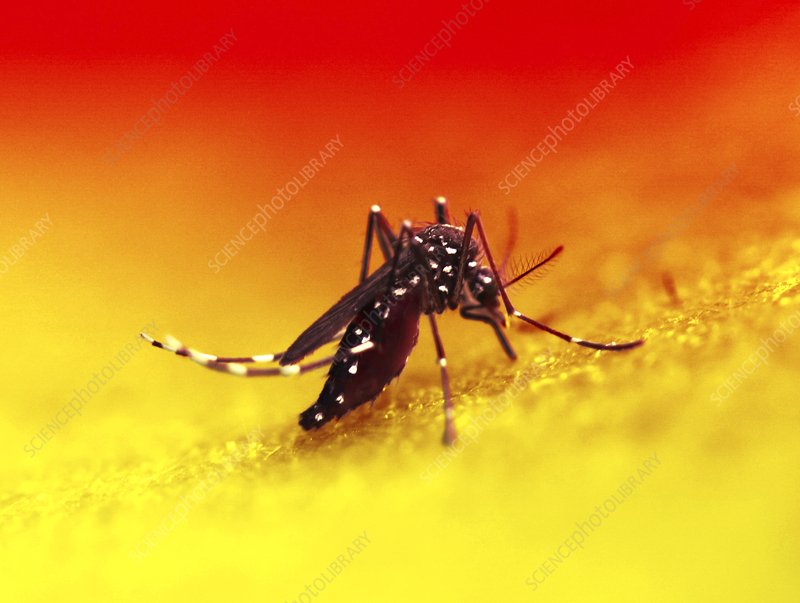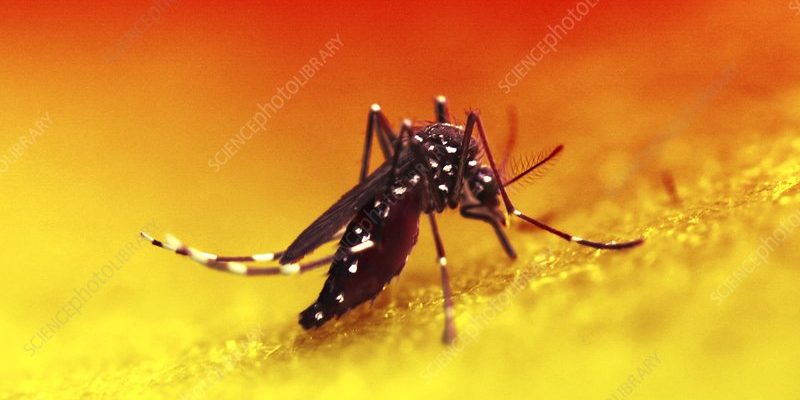
Mosquitoes are often considered nature’s pesky little vampires. These tiny, flying insects are notorious for their ability to bite and draw blood, leaving behind itchy welts. But there’s more to them than just being annoying. They play complex roles in the ecosystem, and understanding them can help us live more comfortably alongside them. So, what exactly is a mosquito?
To start, mosquitoes belong to the family Culicidae, which comprises about 3,500 species worldwide. While most of us are familiar with the common mosquito buzzing around our backyards, these insects can be found in a variety of environments, from tropical rainforests to temperate cool areas. Female mosquitoes, which are the ones that bite, require blood to develop their eggs. Males, on the other hand, primarily feed on nectar and are harmless to humans.
Physical Characteristics
Mosquitoes may be small, but they have some fascinating physical features. They typically measure between 3 to 6 millimeters in length. Despite their size, they have a unique appearance. Their bodies are slender, often with long legs and wings covered in tiny scales. The most identifiable feature is their elongated mouthpart, called a proboscis, which they use to pierce the skin and feed on blood.
Interestingly, the coloration of mosquitoes varies widely among species. Some are grey or black, while others have brown or even colorful patterns. These colors often help them blend into their surroundings, aiding in stealth as they hunt for their next meal. It’s like nature’s version of wearing camouflage!
Here’s a quick fact: mosquitoes have a lifespan that can range from a few weeks to several months, depending on the species and environmental conditions. So even though they might seem like a nuisance, they have a hidden complexity beneath their tiny frames.
| Characteristic | Details |
| Size | 3 to 6 millimeters |
| Habitat | Tropical and temperate regions, near standing water |
| Diet | Females: blood; Males: nectar |
| Speed | Up to 1.5 miles per hour |
| Lifespan | Weeks to several months |
Life Cycle of a Mosquito
The life cycle of a mosquito is quite intriguing, consisting of four distinct stages: egg, larva, pupa, and adult. The journey begins when a female mosquito lays her eggs in or near standing water, like ponds or marshes. Depending on species and environmental conditions, she can lay hundreds of eggs at a time. Think of it as a mini-laying festival!
Once the eggs hatch, they release larvae that live in the water. These larvae, often called “wigglers” due to their swimming motion, feed on organic matter in the water. This stage lasts several days to weeks, during which they grow and molt until they reach the pupal stage. The pupae are often inactive and rest at the water’s surface, preparing for the next transformation.
Finally, after a few days, the pupae transform into adult mosquitoes. Once they emerge, they need to rest for a short time before taking their first flight. This is when they begin their quest to find food—usually, a tasty human or animal. This life cycle can take anywhere from a week to several weeks, depending on temperature and species, making mosquitoes remarkably adaptable.
Behavior and Feeding Habits
When it comes to feeding, mosquitoes are more than just annoyances. They have developed a sophisticated way to locate and target their next meal. Female mosquitoes are equipped with sensory organs that help them detect carbon dioxide, heat, and body odors from afar. In simpler terms, if you’ve ever been outside on a warm day and felt a mosquito buzz near your ear, it’s because it’s sniffing out your presence!
Once they zero in on a target, mosquitoes use their proboscis to pierce the skin, injecting saliva that acts as an anticoagulant. This means it prevents your blood from clotting while they feed, making your experience even itchier. It’s a small price to pay for their survival, unfortunately! What’s even more concerning is that some mosquitoes can transmit serious diseases as they feast.
Diseases like malaria, dengue fever, and Zika virus are just a few results of mosquito bites. While most mosquitoes don’t carry diseases, it’s essential to be aware of your surroundings, especially in areas known for these insects. Working together to reduce standing water in yards or using repellents can help us keep these nuisances at bay.
Ecological Role of Mosquitoes
You might not think of mosquitoes as beneficial creatures, but they hold key roles in the ecosystem. For starters, they are an essential food source for various animals, including birds, bats, and other insects. Just think of them as the “snack” of the insect world—without them, many species might struggle to find adequate food.
Additionally, mosquitoes contribute to the pollination of plants, feeding on nectar and thus inadvertently helping to fertilize flowers. This highlights their role in supporting plant life, making them a small yet vital part of the ecosystem. It’s the cycle of life in action—where even the smallest creatures make a big difference!
So, while we may swat away mosquitoes and curse their existence when they bite, it’s important to recognize that they play a part in the grand web of life. They remind us that every creature, no matter how annoying, has its place in nature.
Preventing Mosquito Bites
Now that you know a bit about mosquitoes, you might be wondering how to keep them at bay. Fortunately, prevention is key! Here are some effective strategies:
- Eliminate standing water: Mosquitoes lay eggs in standing water. Empty pots, bird baths, and other containers regularly.
- Use repellents: Apply insect repellents containing DEET or natural alternatives like lemon eucalyptus oil on exposed skin when outdoors.
- Wear protective clothing: Light-colored clothing that covers your arms and legs can help reduce skin exposure.
- Install screens: Make sure windows and doors are fitted with screens to keep mosquitoes outside.
- Use mosquito traps: Consider setting traps to reduce their populations around your home.
Implementing these measures can significantly reduce your chances of getting bitten. It’s all about being proactive and making small changes in your environment!
Interesting Facts About Mosquitoes
Mosquitoes truly are fascinating little creatures. Here are some interesting facts you might not have known:
- Mosquitoes can sense body heat from up to 100 feet away.
- There are over 3,500 species of mosquitoes around the world, but only a few are known to transmit diseases.
- Some species are attracted to certain blood types, with Type O being the favorite!
- In terms of weight, in some areas, mosquitoes can be one of the most common flying insects.
- Male mosquitoes live longer than females, who typically live 1-2 months compared to males’ few weeks.
These intriguing details help remind us that while mosquitoes may be annoying, they are also incredible in their own right.
FAQ
Do all mosquitoes bite humans?
No, not all mosquito species bite humans. Only female mosquitoes require blood for their egg development, while males primarily feed on nectar and plant juices. Most species prefer to feed on various animals, including birds, amphibians, and insects.
Can mosquitoes live in cold climates?
Yes, some mosquito species can survive in cold climates. They often enter a state of dormancy during winter months, hiding in sheltered areas until it warms up. However, they are more prevalent in warmer regions where standing water is available for breeding.
How can I stop mosquitoes from breeding in my backyard?
You can prevent mosquitoes from breeding by eliminating standing water sources. Regularly check for stagnant water in planters, bird baths, gutters, and any containers. Cover or store items that can collect water and regularly change the water in bird baths.
What diseases do mosquitoes transmit?
Mosquitoes can transmit several serious diseases, including malaria, dengue fever, West Nile virus, Zika virus, and chikungunya. However, not all mosquitoes carry these diseases; it largely depends on the species and local infection rates.
How fast can mosquitoes fly?
Mosquitoes can fly at speeds of about 1.5 miles per hour. While they aren’t the fastest creatures, they can cover distances quickly when searching for food.
What scents do mosquitoes dislike?
Mosquitoes tend to dislike strong scents such as citronella, lavender, eucalyptus, and peppermint. You can use these essential oils in diffusers or as natural repellents to deter them.
Are there natural ways to repel mosquitoes?
Yes, there are several natural methods to repel mosquitoes. In addition to using essential oils, you can plant mosquito-repelling plants like marigolds, basil, and lemon balm in your garden. These can help create a natural barrier against the pesky insects.
What time of day are mosquitoes most active?
Mosquitoes are generally most active during dawn and dusk, although some species can bite during the day. It’s a good idea to take extra precautions during these times, especially if you are in an area prone to mosquito activity.
Can mosquito bites be dangerous?
While most mosquito bites are harmless and cause minor irritation, they can be dangerous if the mosquito carries diseases. It’s essential to be aware of local mosquito-borne diseases and take appropriate precautions to avoid bites.
Do mosquito repellents really work?
Yes, mosquito repellents containing ingredients like DEET, picaridin, or oil of lemon eucalyptus are effective in keeping mosquitoes at bay. It’s important to apply them according to the instructions for best results.
Can mosquitoes travel long distances?
While mosquitoes have limited flight ranges, some species can travel several miles. Wind can also carry them longer distances. However, most mosquitoes stay within a mile or two of their breeding grounds.
What should I do if I get bitten by a mosquito?
If you get bitten, you can soothe the itch and swelling with over-the-counter creams, cold compresses, or antihistamines. If you experience severe reactions or signs of infection, consult a healthcare professional.

